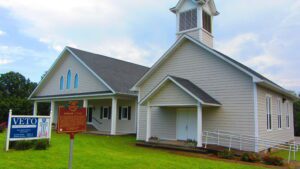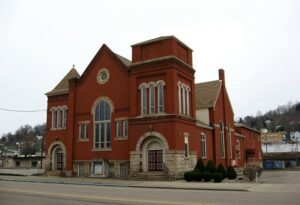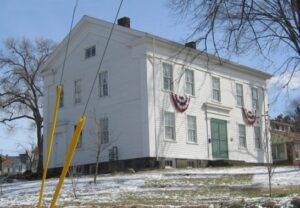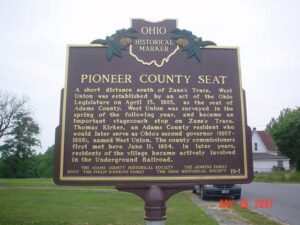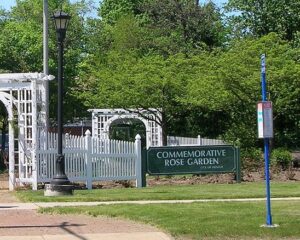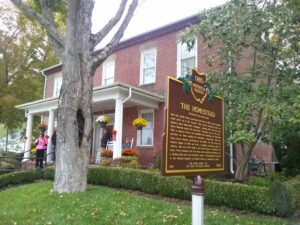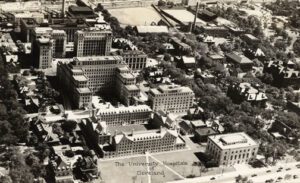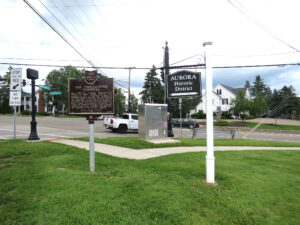, OH
Ephraim Cutler (1767-1853) arrived in Marietta from Connecticut in 1795. Prominent in southeast Ohio, Cutler was appointed judge of the court of common pleas and justice of the peace, surveyed land for the Ohio Company, and was a trustee of Ohio University. In 1802, Cutler was chosen as a Washington County delegate to Ohio’s constitutional convention in Chillicothe. A contested issue at the convention was whether to permit or exclude slavery in the new state of Ohio. As a member of the committee that introduced Article VIII, or the bill of rights, of Ohio’s Constitution, Cutler drafted Section 2, which specifically excluded slavery or involuntary servitude in Ohio on the basis that the Ordinance of 1787 forbade it. The section passed through the convention by one vote. Veto Lake was named for Cutler’s role in having slavery vetoed in Ohio.
, OH
Cornelius D. Battelle was born July 13, 1807 in Washington County, Ohio. He entered the Methodist Episcopal Church on October 30, 1825 and the Pittsburgh Methodist Conference in 1833. He was assigned pastoral circuit duties in rural eastern Ohio and the small river settlement of “Belle Aire” where he delivered his first sermon in a warehouse during the winter of 1838. He established the first Methodist class of eleven members in 1839 and rallied subscriptions to build the first church in the community. He served the Ohio Conference for 64 years before his death on July 2, 1897.
, OH
Built circa 1840 by Henry Barnhisel Jr. in the Greek Revival architectural style, the Barnhisel home is one of the oldest remaining structures in Girard. Henry and Eve Anna Barnhisel purchased the land where the house stands in 1813 when they acquired 318 acres in the Connecticut Western Reserve. The couple moved onto the land with their eleven children, and the family lived among a large group of Pennsylvania Germans who settled in Liberty Township. Their son, Henry Jr., took over the farm after his father’s death in 1824. In 1833 he married Susan Townsend. Henry contributed to his community by playing a key role in the building of both the Methodist Church and the first brick school in Girard and Liberty Township. He fathered five daughters, some of whom married into other leading families of the Mahoning Valley, including William Tod, son of the governor. Two granddaughters married into the Wicks and Stambaughs.
, OH
The Adams County Fairgrounds, established at this site in October 1853, on seven acres of land donated by Judge George Collings, was converted to a Civil War training camp named in honor of General Thomas Hamer, a Mexican War hero, of Georgetown, Ohio. The old stone Courthouse was made into a hospital to serve the camp. The 70th Ohio Volunteer infantry, organized in October 1861, trained on the old fairgrounds until Christmas day 1861, when it marched from Camp Hamer to Ripley. The 70th participated in the battles of Shiloh, Tennessee; Atlanta, Georgia; the siege at Vicksburg, Mississippi, and Sherman’s March to the Sea.
, OH
From the 1920s through the 1970s, Mentor was recognized as the Rose Capital of the Nation. Lake effect climate, a variety of soils, and abundant water made Mentor ideal for growing roses. Over a dozen growers produced about five million plants a year from their fields in Mentor. The Civic Center Complex was once a massive field of roses, and streets such as Tea Rose, Wyant, and Rosebud were named in honor of the blossoms that grew so abundantly here. Notable growers include Gerard K. Klyn, the largest rose grower in the Midwest; Joseph Kallay, who in 1932 received U.S. patent No. 10 for “Blaze;” Melvin E. Wyant, accredited rose grower, judge, and lecturer; Joseph J. Kern, nationally recognized expert on old fashioned roses; and Paul R. Bosley, who specialized in hybrid tea roses. By the 1970s, increased land values and development led to depletion of much of Mentor’s nursery lands.
, OH
The Homestead was built in 1820 by Nehemiah Wood with an addition completed in 1822 by his son, Harrison. The Wood family, a pioneer family of Gallia County, arrived in 1805. The Homestead remained in the Wood family for over 100 years. The two-story Federal style building is constructed of bricks made on site by freed slaves who accompanied Nehemiah Wood from Virginia. The lane just below the house was a stagecoach route that ran between Chillicothe and Gallipolis. In the mid-1800s the Homestead served as an inn and stagecoach stop. The Wood family sold the farm to Rio Grande College in 1938 which used the land for college gardening and farming programs. (Continued on other side)
, OH
Named for the streetcar turnaround once located at Euclid Avenue and East 107th Street, University Circle is a 600-acre district that is home to many of Cleveland’s major cultural, educational, medical, and service institutions. The area was first settled in 1799 by tavernkeeper Nathaniel Doan and became known as Doan’s Corners. In 1882, Western Reserve College moved here from Hudson, followed in 1885 by the Case School of Applied Science from downtown Cleveland. These two colleges federated in 1967 to become Case Western Reserve University. (continued on other side)
, OH
The Chillicothe Turnpike stimulated the growth of Aurora Center, Aurora’s first commercial area. Established in 1802 by Benjamin Tappan, the road also precipitated the development of Kirtland, Chester, Russell and Bainbridge, provided access to landlocked properties, and linked distant towns from Lake Erie to Ohio’s first capital in Chillicothe. In Aurora, the Chillicothe Turnpike turned southwest towards Hudson and continued southward over the boundary of the Western Reserve.


